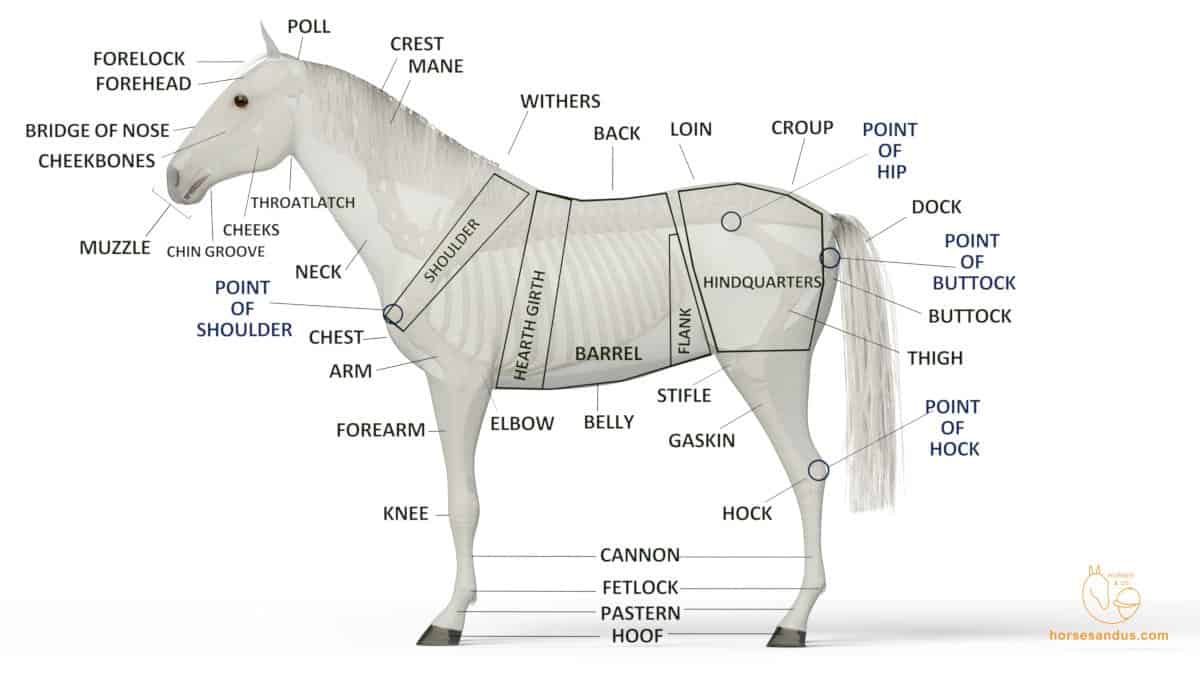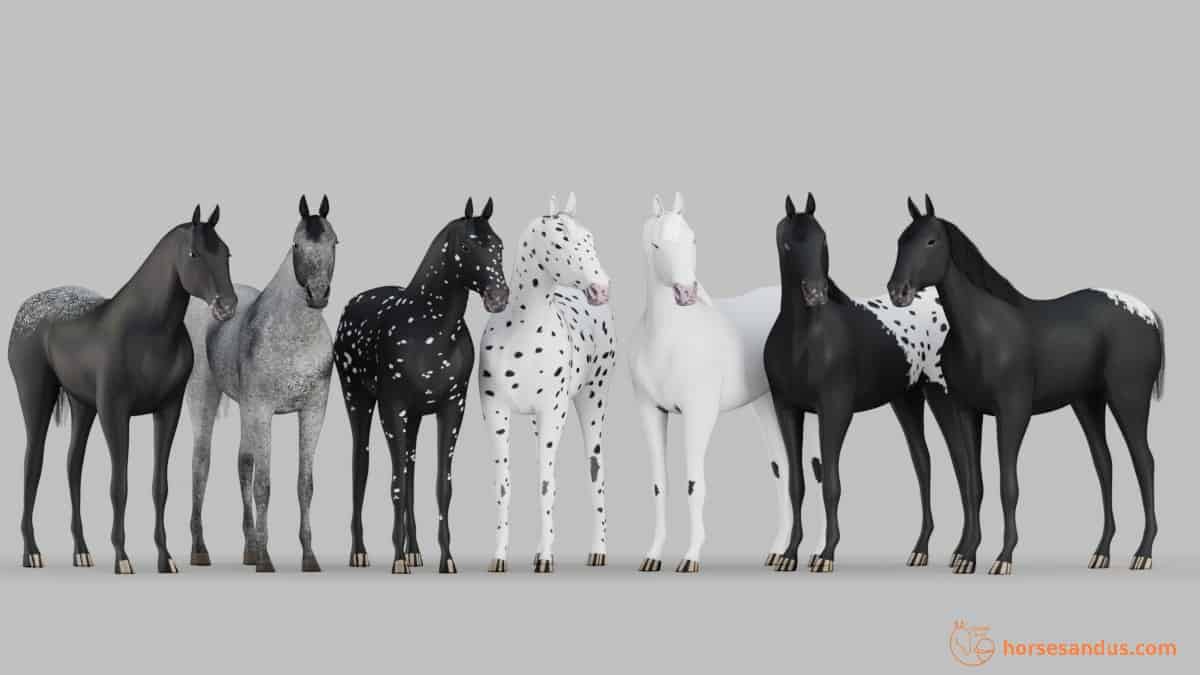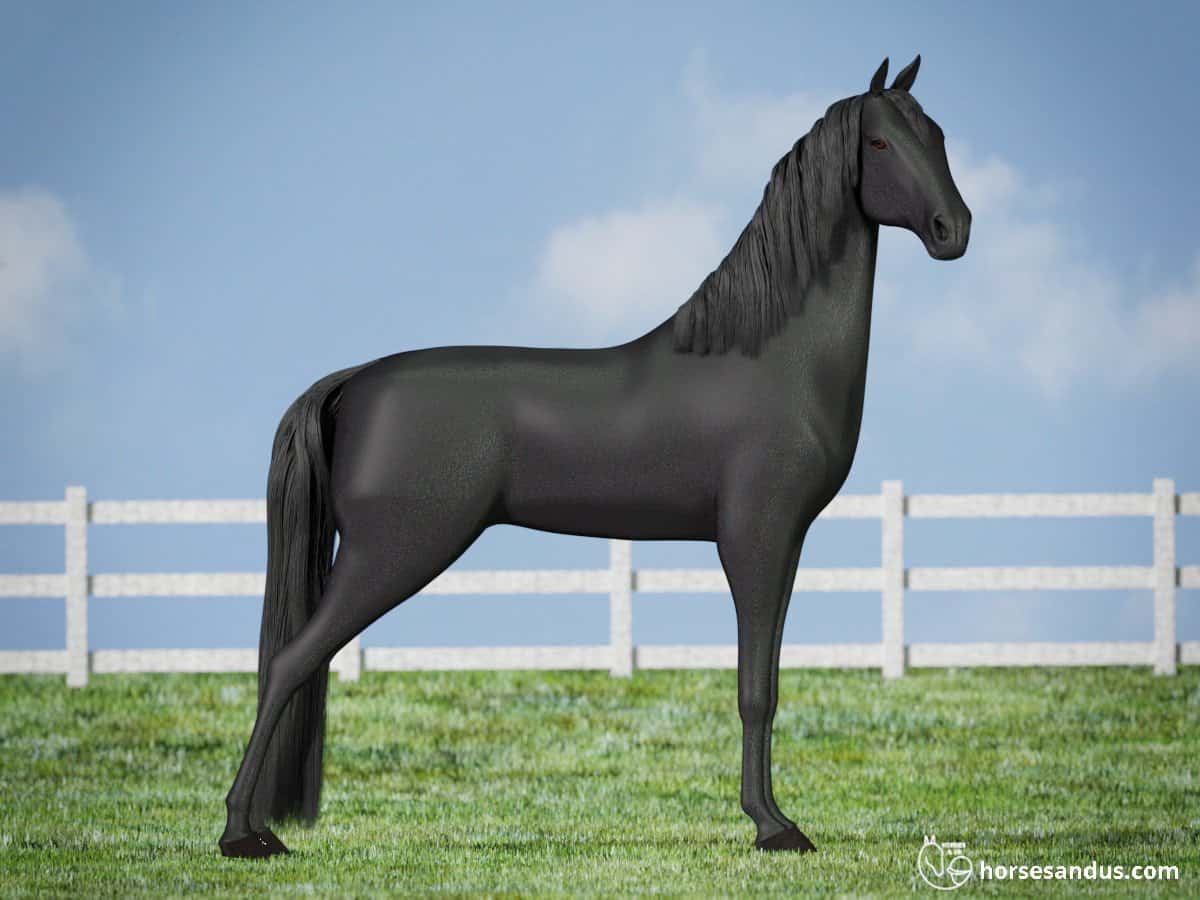You may have seen foam on a horse’s mouth and wondered if it is something normal or a reason for concern. Well, it depends, and in this article, we will show you why.
Horses foam at the mouth for a variety of reasons. It happens when there is excess salivation. In some cases, it is normal, such as exercising and eating certain types of food. In others, it is worrisome, like choking, poisoning, and rabies. The foam is created by a soaplike substance existing in the saliva called latherin.
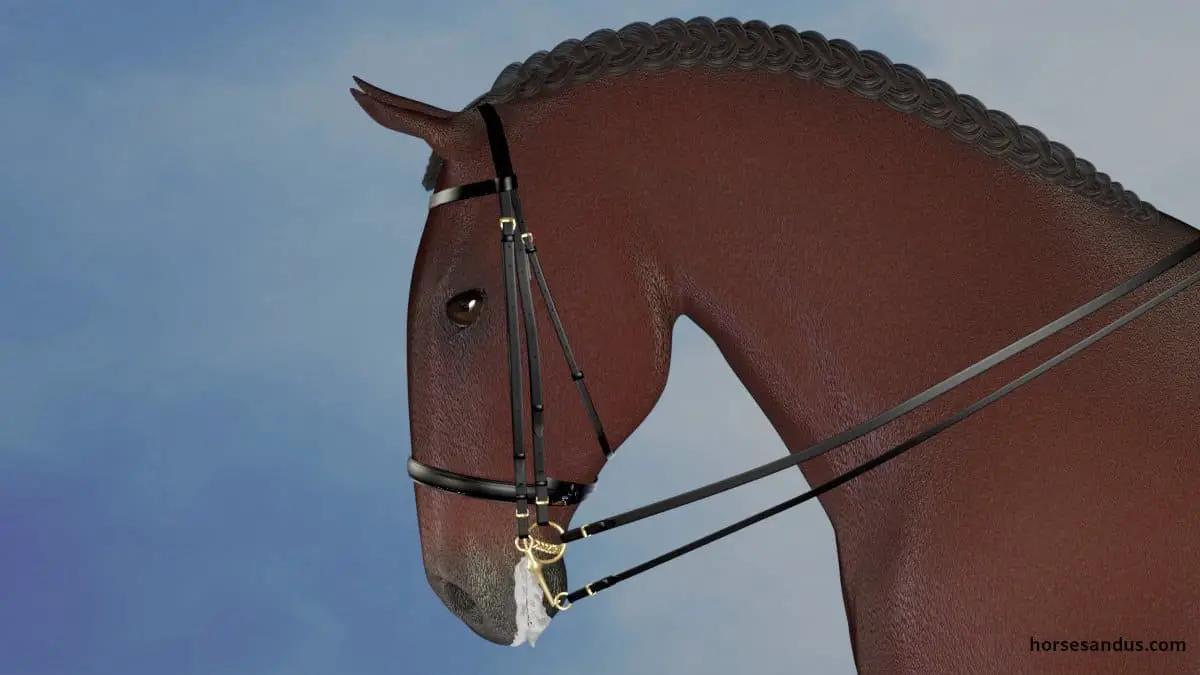
This article will explain how foam is produced in the saliva, when it is normal, and when it can be a problem.
How is Foam Produced in the Saliva?
Just like us, horses also produce saliva to moisten and soften the food in the mouth to help chew it and ease its passage through the esophagus and into the stomach. Horses can produce up to 40 liters (about 10 gallons) of saliva every day.
When the food is very dry it needs extra moistening, so saliva is produced in higher quantities.
Latherin increases the Spreading of Saliva
The saliva needs to be able to penetrate the crevices of the food to moisten it thoroughly.
Here is where the substance latherin comes into play because latherin increases the spreading and penetrating properties of the saliva. This allows the saliva to reach more areas of the food surface, and thus moisten it more.
If we compare latherin to soap you can understand why it is a spreading agent by watching this video.
But what about the foam?
Well, latherin behaves in the same way as soap does.
Water with soap will become foamy when you rub your hands together to wash them. In the same way, saliva will become foamy when parts inside the horse’s mouth are rubbed together.
The rubbing of parts in the mouth will agitate the saliva and create air bubbles inside it. Then the latherin stabilizes these air bubbles.
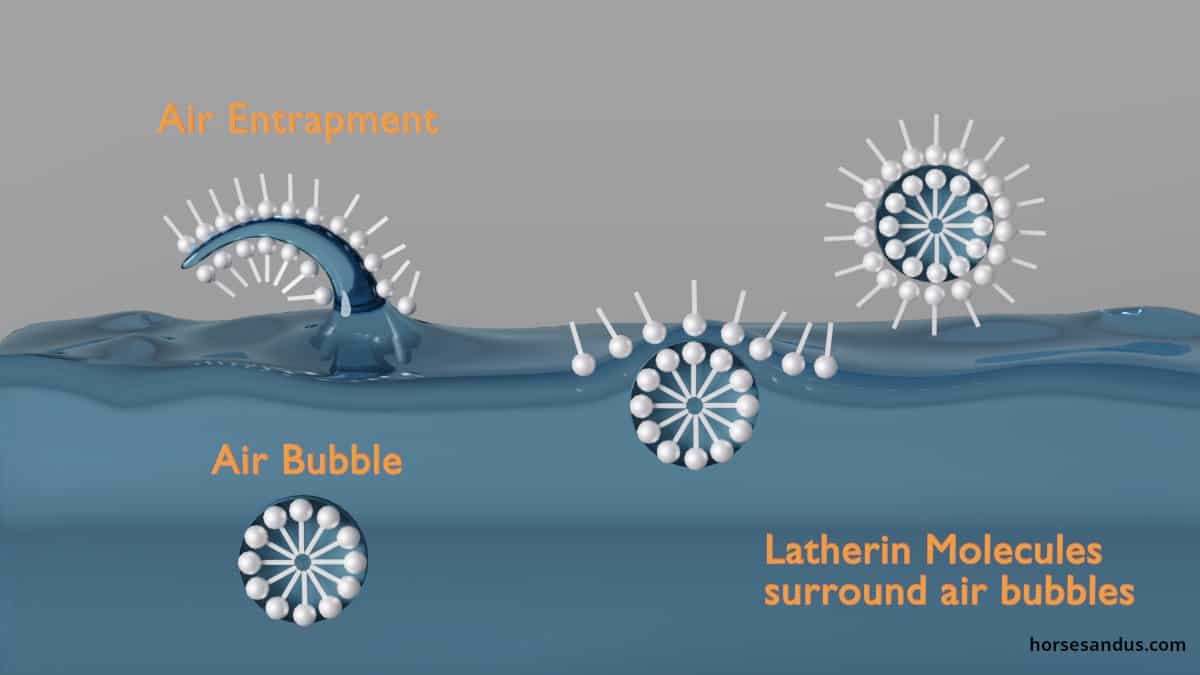
Molecules of latherin surround the air bubbles to allow them to exist in the saliva for some time without bursting. The mass of these air bubbles is what makes up the foam we can see in the horse’s mouth.
It is believed that horses went through an evolutionary adaptation to an unusual substance in their saliva called latherin, enabling them to eat dry food. The side effect of this substance is the production of foam when the saliva is agitated inside the horse’s mouth.
Latherin also exists in the horse’s sweat to enable the spreading of sweat water onto the coat’s surface for evaporation. This is why horses foam when they sweat because it helps the heat to dissipate from the horse’s body.
Horses foam at the mouth in dressage
People that are not familiar with the dressage discipline may be surprised to notice the foam around the horse’s mouth during exercise.
They may think that the horse is under stress or pain. A negative association to foaming is understandable because what often comes to mind is poisoning, drug overdose, seizures, and rabies.
But in dressage, foaming is usually a sign that the horse is relaxed and being ridden correctly.
Foam at the mouth = relaxed horse
When the horse is in a good posture, it is said to be “in collection.” This is a combination of engaged hindquarters, a light forehand, elevated withers, a rounded back, an elongated and arched neck, and the head in front of the vertical.

When the horse is “in collection”, the relative position of the neck and head will put pressure on the salivary glands causing the production of saliva.
This position is comfortable for the horse, so he will relax and seek contact with the bit to play with it by softly chewing. This movement of the lips and jaw will agitate the saliva and produce some foam on the horse’s mouth, that looks like white lipstick.
Dry mouth = tense horse
If, on the contrary, the horse is not collected and has a bad posture, the salivary glands will not produce saliva. The horse is usually tense and will have a dry mouth.
Dry mouths are the result of being ridden with unstable hands and pulling.

Excessive foam at the mouth = tense horse
However it may also be the case that the horse has too much foam.
If the horse does not have a good posture and if he is visibly straining, then the foam may indicate tension in the jaw, inability to swallow, and tensed muscles pressing the salivary glands to cause salivation.
This happens when a rider holds the horse’s head too tightly, squeezing it against the neck and forcing the jaws open.
In this case, an abundant amount of foam will drip from his mouth onto his neck and shoulders, which is definitely not a sign of relaxation.

So it’s not just the foam. We need to also look at the horse’s posture, to see if the horse is relaxed or not.
Horses foam at the mouth when eating
Horses will typically produce saliva when they eat, but extra saliva is produced when horses eat certain foods, like dry forage, pellets, and some treats (sugar, carrots. apples)
In these cases, foam will be seen at the mouth due to the additional saliva and friction in the mouth caused by chewing.
It is believed that horses evolved to have latherin in their saliva to help them digest dry forage.
When Foaming at the mouth can be a reason for concern
Although it is uncommon, sometimes foaming at the mouth and drooling can be a reason for concern. It may be a sign of a medical problem and can vary from mild to severe.
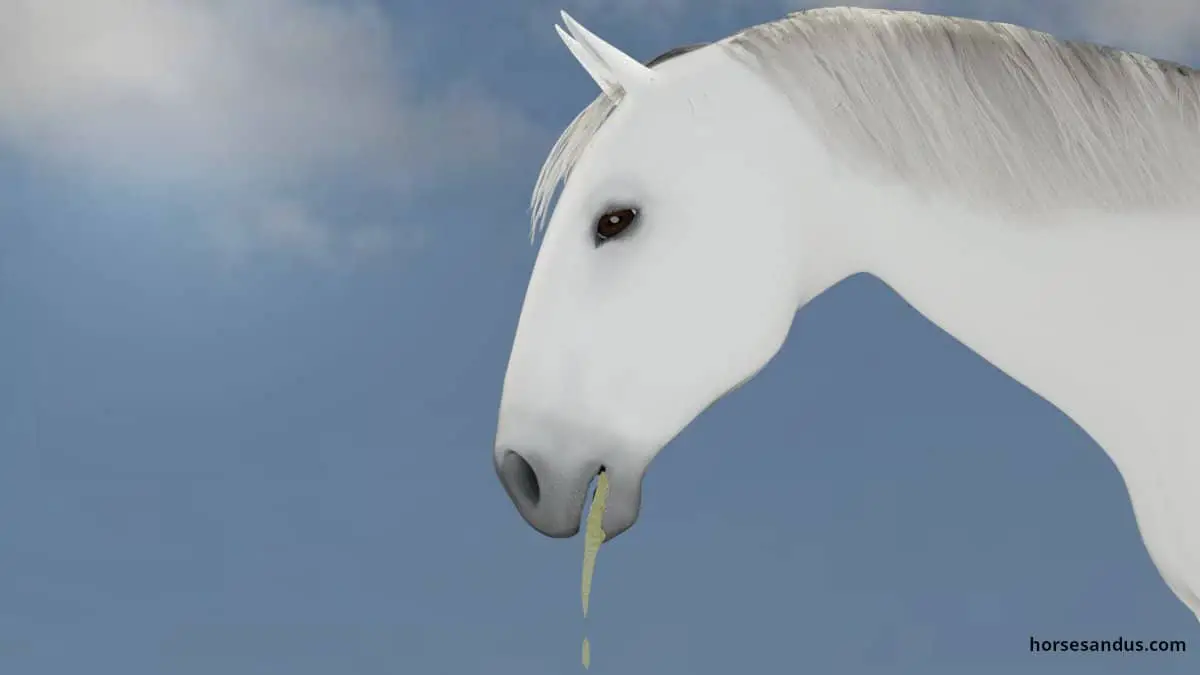
Toxic causes
Clover
The horse may have been grazing in a pasture with clover infected by a fungus called Rhizoctonia leguminicola, which causes horses to produce an excess of saliva. This condition is commonly known as “slobbers”.
This fungus exists most commonly in red and white clover and produces brown or gray spots on the leaves.
This fungus rarely causes harm, and the horses quickly recover as soon as they are removed from the pasture.

Insecticides
Certain types of insecticides can be toxic to horses. However, besides drooling, other symptoms are also present, such as frequent urination, diarrhea, colic, difficulty breathing.
This medical condition requires immediate treatment, and you should urgently call a veterinarian. Horses can’t vomit, so only a veterinarian can help to remove the toxic substance from within the horse’s body.
Gastrointestinal causes
Mouth injury or ulcers
When the gums have injuries or ulcers, the horse will produce excessive saliva and foam. Sometimes the foam will be reddish with blood.
Many things can cause oral injuries and ulcers, such as teeth with sharp edges, foreign objects, grass awns, toxic plants, and viruses.
Choke
When a horse is choking, he will have a green or brown foamy discharge coming out of his nose and mouth, along with other symptoms such as snorting, coughing, stretching his neck, and shaking his head.
Horses will choke when something gets stuck in the esophagus, such as food that is too dry or not thoroughly chewed, food that swells quickly after being chewed, or any foreign object.
Read more about horse choke in our article that explains why horses can´t vomit.
Gastric tumors and liver diseases
Although quite rare, gastric tumors and liver disease may cause excessive salivation, among other symptoms.
Infectious Causes
Rabies
This infectious disease is 100% fatal, but fortunately can be prevented if the horse is vaccinated.
It occurs when a horse is bitten by an infected animal (dog, raccoon, skunk, fox, or bat) carrying the virus.
The virus then travels along the peripheral nervous system to the brain. This explains why many of the symptoms of rabies are of a neurological nature.
Besides excessive saliva and foaming, the horse will present highly variable symptoms, and therefore this disease is difficult to diagnose. The horse can be restless and very aggressive (bucking or biting), but he can also show signs of depression, lack of appetite, and progressive paralysis.
If a horse has rabies, the final outcome is always death.
Equine Viral Arteritis (EVA)
This infectious disease also causes excessive salivation in horses, among other symptoms like fever, depression, swelling of the belly and limbs, Inflammation, and ulcers in the mouth.
Summary
As we have seen, horses foam at the mouth because of the protein called latherin, which produces foam when the saliva is agitated.
Horses may foam at the mouth for different reasons; some are good, while others are problematic. With the right knowledge, you can more easily identify what may be the cause for the foam on your horse’s mouth. But when in doubt, always call your veterinarian.
Further reading
If you would like to learn more on this subject, check the following link.
